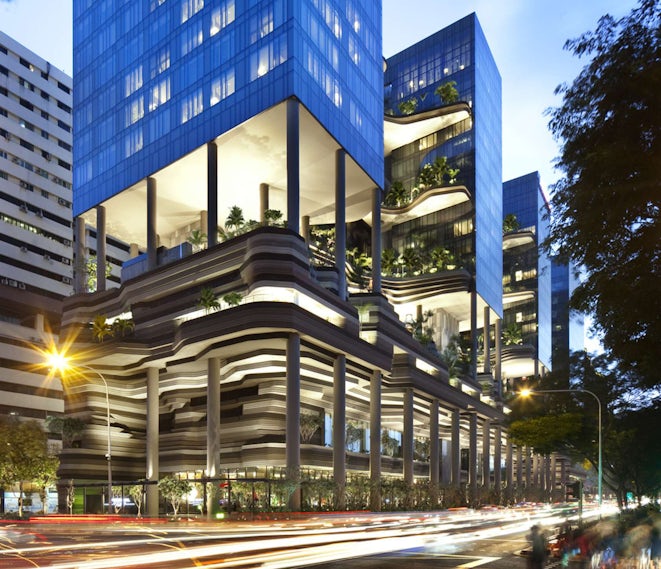Burning Man 2016 might have come to a close, but like a phoenix it will rise again next year, hotter and brighter than ever. Until then, we are left with the memories of this one-of-a-kind festival, which ties art, music and design together with the spirit of community.
If you missed the festivities in Black Rock City, Nevada, this year, don’t worry! Architizer has you covered. Here are the top five Burning Man installations for architects:


5. Black Rock Lighthouse Service
by Jonny and Max Poynton
It doesn’t always take much to stand out. In Black Rock Lighthouse Service, Jonny and Max Poynton bring one of the most familiar architectural forms — the lighthouse — to an unexpected location, miles from water in the midst of the Nevada desert. The trio of lighthouses lean away from one another in an irregular fashion, which gives them a spark of personality. One thinks of the weird sisters of Macbeth: spooky figures of the night that seem to have been called from the depths of memory.

4. Heart of Gold Installation
by HYBYCOZO
These miniature domes resemble nothing as much as terrariums, but architects will also note a resemblance to the geodesic dome, Buckminster Fuller’s most iconic invention. The project, described on the design firm’s Kickstarter page as a “geometric and iridescent light installation,” seeks to encourage the “contemplating [of] life, the universe and everything.” Simple geometric structures that play on multiple referents from art and architectural history, these small domes are an open canvas for the imagination.


3. Typographic Installations
by Laura Kimpton
Three-dimensional typography is somewhat mysteriously underutilized. While few things in the world are more iconic than the Hollywood Sign or Philadelphia’s LOVE statue, other cities seem reluctant to commission public art that gives shape and volume to text. Perhaps we are still a society grounded in the image, even in the Information Age. At Burning Man, Laura Kimpton selected Art Nouveau letterforms to make bold, direct reference to some of the guiding themes of America’s favorite bohemian festival.


Photos via Mamou-Mani
2. Tangential Dreams
by Mamou-Mani
Design firm Mamou-Mani’s twisting structure unfurls in the manner of a vine, reminding this reporter of the Japanese conceptual architectural movement Metabolism, which sought to create buildings that would change over time like living things. By drawing a connection between nature and architecture, Mamou-Mani speaks to the spiritualist bent of the Burning Man festival, which connects contemporary art with older forms of expression such as ritual and myth.
“Tangential Dreams is also the physical manifestation of our collective dreams,” wrote Mamou-Mani on the team’s Kickstarter page. “It is a 30-feet-high twisting tower with thin wooden tangent swaying in the wind with inspiring sentences written by people around the world.” The natural appearance of the structure was achieved through the use of a sophisticated algorithm.

1. Temple
by Temple Crew
Since 2000, Burning Man has featured wooden temples, a tradition pioneered by the artist David Best. In keeping with the festival’s emphasis on transience, these are burned down each year, a ritual of creative destruction that renders something that is ordinarily fixed in place — architecture — into something fleeting and ephemeral. In this way, the structures allow architecture to become an event.
Unlike previous years, in which the temples were given names such as Temple of Hope or Temple of the Mind, this year’s temple is simply titled Temple. In this way, it stands in for all the other structures that have constituted this decade-and-a-half-long project. The form of this year’s structure — a simple pagoda — fits in with its intention to capture the essence of the ritual.

This year’s temple seen from afar through a conceptual piece entitled Got Framed by Nino
“While the Temple is something that does reflect the mad masquerade and joy of our community, it does so with sacredness, solemnity, a sense of remembrance, grief and renewal that can appear as a stark contrast to the rest of the event,” wrote John Mosbaugh, aka “Moze,” in an essay published on the official Burning Man website. “It is that contrast that helps to define the Burning Man community as anything but one dimensional.”
All images via If It’s Hip, It’s Here unless otherwise noted




